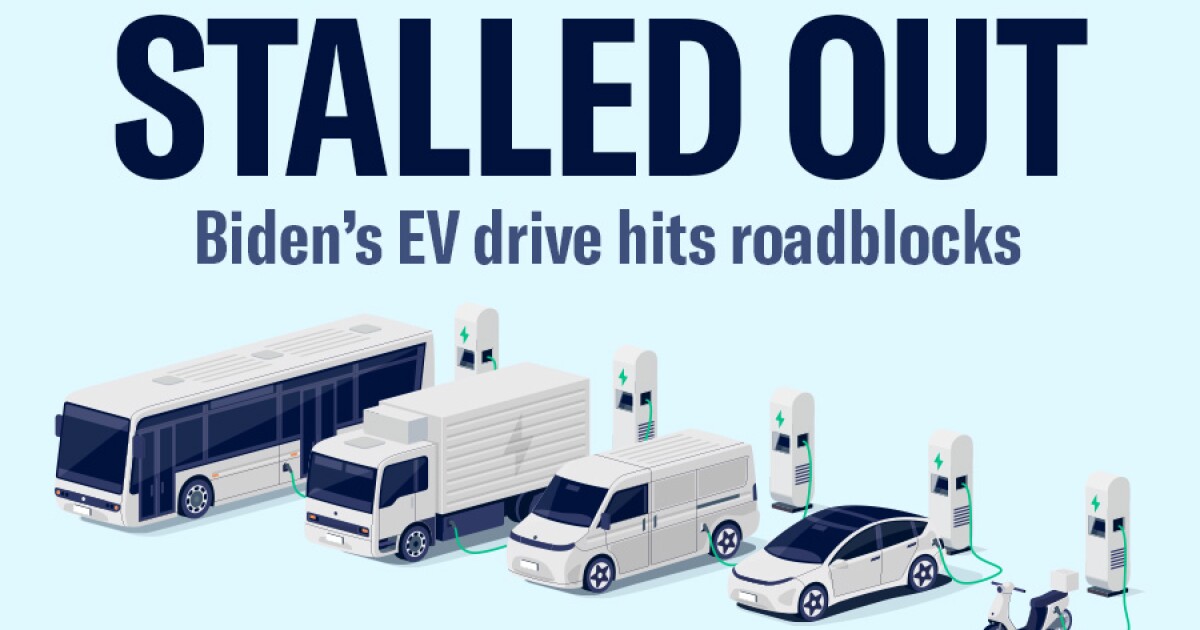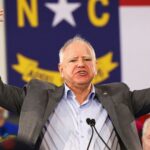

The Biden administration is setting out to build hundreds of thousands of electric vehicle chargers over the next seven years, but the ambitious project faces some significant logistical hurdles.
Meeting President Joe Biden’s sales targets for EVs will require exponential growth of new charging infrastructure needed to fuel them, and billions in new federal charger funding makes the initiative more feasible. But that money comes with strings attached in the form of domestic content requirements that manufacturers and some project developers warn threatens to slow down building.
TREASURY PROPOSES OPENING ELECTRIC VEHICLE CREDITS TO MORE COUNTRIES AMID TRADE TENSIONS
Charging ventures also face some of the same challenges bedeviling other sectors, including slow permitting to authorize new construction, making swift deployment more difficult.
Biden set a goal of installing 500,000 chargers throughout the United States by 2030, the same year it’s targeting 50% of all new vehicle sales being electric.
Congress authorized $7.5 billion in the Infrastructure Investment and Jobs Act, commonly known as the bipartisan infrastructure law, to fund construction of this national charging network. The Department of Transportation and the Federal Highway Administration finalized standards for the program, which require the provision of publicly accessible data on locations, price, and availability of charging stations for those funded with federal dollars.
Under the standards, fund recipients will also have to comply with “Build America, Buy America” conditions designed to strengthen domestic manufacturing. The FHWA has long-standing requirements applying to any infrastructure project it funds, such that all steel and iron that are “permanently incorporated” into a project must be produced in the U.S., unless those requirements are waived.
The agency will also require that 55% of the cost of components used in a charger be manufactured in the U.S. to be eligible for federal dollars.
The FHWA created a temporary “public interest” waiver to waive the Buy America requirements for steel, iron, manufactured products, and construction materials in EV chargers. The waiver “enables EV charger acquisition and installation to immediately proceed while also ensuring the application of Buy America to EV chargers by the phasing out of the waiver over time,” according to a summary.
Some manufacturers, including Tesla, assemble chargers in the U.S., making compliance with Buy America’s requirements easier to achieve, but other manufacturers and project developers sought more flexibility. They say the waiver is not sufficient.
“We need a glide path. We don’t have that,” Jonathan Levy, EVgo’s chief commercial officer, said during the SAFE Summit, a recent industry conference on electrification held in Washington, D.C.
EVgo, which owns and operates the nation’s largest network of direct current fast chargers, asked the FHWA and DOT to liberalize requirements further after the waiver was proposed and said a blanket domestic final assembly requirement “should not and cannot reasonably be required until there is sufficient [DC fast charger] supply to meet demand, and plainly, that will not occur in 2023.”
“In order to transition to U.S. manufactured chargers for federally funded programs, purchasers like EVgo can either work with their existing foreign suppliers to shift production to the U.S., or can qualify new domestically produced chargers for installation. Unfortunately, the proposed phased-in timeline is insufficient for either option,” EVgo said in comments to the waiver proposal last year.
FHWA finalized the waiver in February, and it went into effect March 23, applying to all chargers manufactured by July 1, 2024, and whose installation has begun by Oct. 1, 2024. The waiver does not exempt domestic assembly.
Much is riding on the success of the charging program in helping to convince drivers to make the switch to electric, a central component of the Biden administration’s climate change agenda.
Biden committed the U.S. to reaching net-zero greenhouse gas emissions by 2050 under the Paris climate agreement, and transportation remains the largest source of emissions.
The Department of Energy and others have identified limited charging access among the top barriers to EV adoption, and officials say the goal behind a national charging network is to make charging an EV as simple as making a visit to the gas station to fill up a combustion engine vehicle.
Charging difficulties remain an equal opportunity source of disappointment for average drivers and executives.
Vic Shao, president of BP Pulse Fleet, the electrification business for the multinational energy giant, explained the difficulty he had during a trip he took to White Sands National Park in New Mexico in his EV.
Shao recalled having to go to the campus of a local community college near the park, which wasn’t equipped with a fast charger, in the middle of the night.
“I trickle-charged my car overnight and had to hike three-quarters of a mile back to a hotel that night at two in the morning and then [back] the next morning again just so that I could get a charge so I could leave town,” Shao said.
BP Pulse Fleet has agreements to build charging projects for Hertz and Uber in various locations, including city centers and airports.
CLICK HERE TO READ MORE FROM THE WASHINGTON EXAMINER
Getting those chargers in the ground quickly remains a challenge for reasons that have nothing to do with Buy America, according to Shao, who explained that the amount of time it has taken to secure permitting for construction at a given airport has ranged from as quickly as 30 minutes to as long as two years.
“We have to make this easy,” he said.





